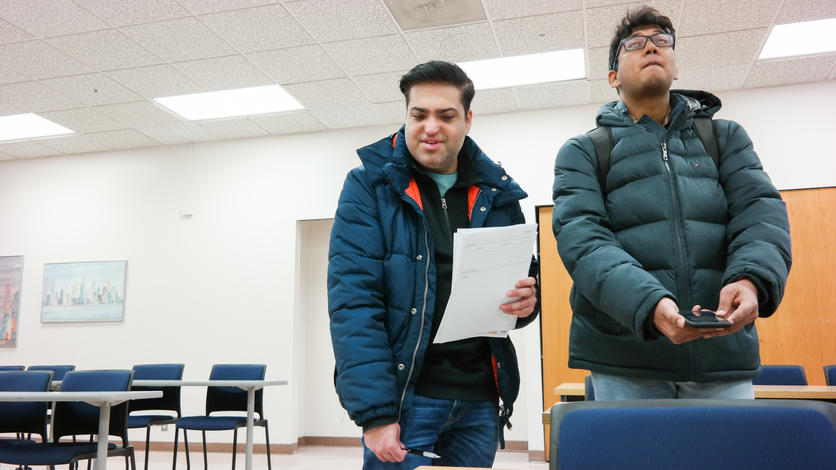
The goal for each of the universities participating in the statewide E-Challenge competition was to craft an energy savings plan for their respective campuses, but it was up to each university to define exactly what that would look like. The team from UM-Dearborn decided to go about as big as they could. They set themselves to auditing every major building — an approach that involved walkthroughs and deep analysis of each one over the course of the winter and early spring. Lighting, complex HVAC systems and anything in between were all taken into account. The result was a 500-page report detailing dozens of specific projects with substantial returns on investment that, if implemented, could save the university $200,000 a year on its energy bills.
The scope and level of detail left an impression on judges from E-Challenge sponsors DTE Energy and the Engineering Society of Detroit, who awarded the UM-Dearborn team the top spot in the competition. Executive Director for Facilities Operations Carol Glick is thrilled with the win, and says she is particularly impressed with the collaboration between students, tradespeople, faculty and staff. But she’s equally excited about what it could mean in practical terms for the campus. This is the first time they’ve had such a comprehensive understanding of how the campus buildings use and lose energy — information that helped them identify and prioritize dozens of projects, many with payback periods of just a few years. In total, their plan would reduce electricity usage by 8 percent and natural gas consumption by 10 percent over five years — a big first step in getting UM-Dearborn to meet the U-M system’s carbon neutrality goals. “I think it’s also always important to remember that we’re largely a tuition-funded university, and energy efficiency is one way we can be good stewards of the investments students are making,” Glick says.
The campus team will also get a big assist from DTE to implement the plan. The E-Challenge award earns UM-Dearborn a spot in DTE’s Strategic Energy Management (SEM) program — a one- to two-year partnership that helps the campus identify low or no-cost improvements, provides technical support from DTE energy experts, and offers additional incentives only available to those in the SEM program.

E-Challenge faculty team member and Associate Professor of Engineering Practice Line van Nieuwstadt says she’d love to see students stay involved in the implementation of the energy plan. In particular, she sees potential for “internal internships” that leverage faculty with relevant expertise, staff and students to tackle energy-related projects that improve campus facilities and infrastructure. Ideally, she says, that would involve a for-credit experiential learning opportunity, as is done with CECS’s senior design program or for-credit co-ops.
“Could we have a team that explores taking a building off the grid? Or could we have a class where the project is to design a system to recycle gray water and save energy? Or how about investigating class schedule optimization that would reduce heating needs in the winter and cooling costs in the summer? An idea like that doesn’t even require much up-front investment other than turning students loose on the data and some guidance from faculty,” van Nieuwstadt says. “So there’s a lot of potential, especially if we can offer the students academic credit for these kinds of project-based learning experiences.”
Master’s student Keerthana Ramasamy Thirugnana Sambantham would be more than happy to offer a testimonial. One of 19 graduate students who worked on the E-Challenge, she says it made such an impression on her that she hopes to make her career in the field of energy and sustainability.
“I’m from India and when I was learning about energy audits, all the learning was very theoretical,” she says. “But I’d never seen anything like this in person. In the E-Challenge, I literally counted lights in the buildings. I got to know all the features of the systems and equipment up close. I never thought I’d get to do something like that, but the learning is so much more practical when you do it this way. I think as you do, you learn.”





